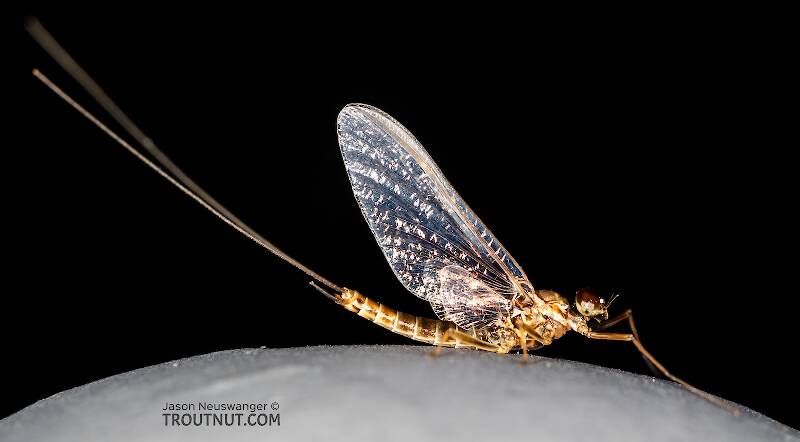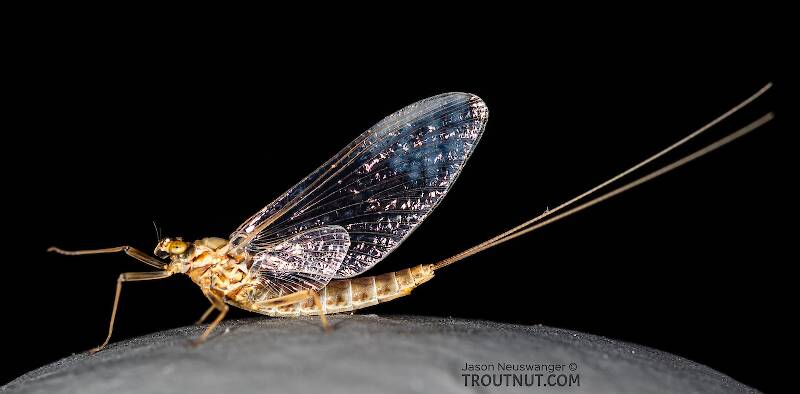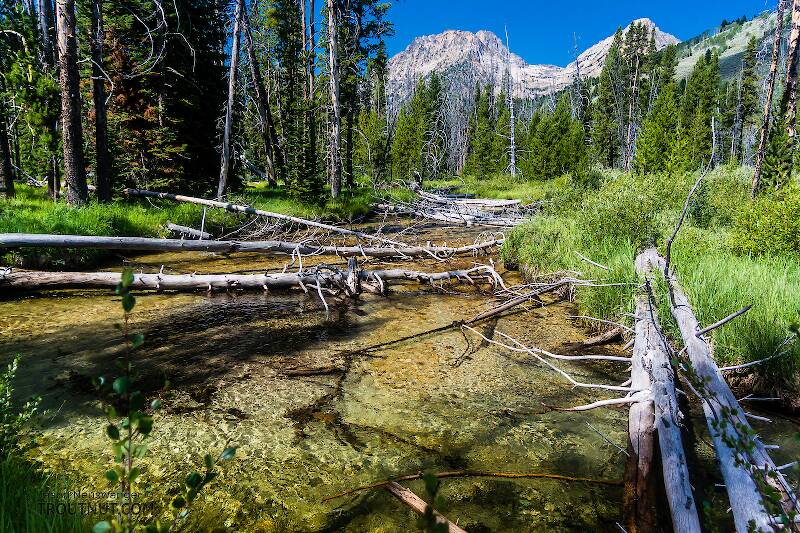
Blue-winged Olives
Baetis
Tiny Baetis mayflies are perhaps the most commonly encountered and imitated by anglers on all American trout streams due to their great abundance, widespread distribution, and trout-friendly emergence habits.

Mayfly Species Rhithrogena undulata (Small Western Red Quills)
Species Range
Hatching behavior
Rhithrogena undulata duns escape their nymphal shucks underwater, but instead of emerging on the stream bed like most Rhithrogena species, they wait until they are within inches of the surface.Swisher and Richards in Selective Trout say the duns are unimportant.
Spinner behavior
Time of day: Dusk
Nymph biology
Current speed: Slow to medium
Physical description
Most physical descriptions on Troutnut are direct or slightly edited quotes from the original scientific sources describing or updating the species, although there may be errors in copying them to this website. Such descriptions aren't always definitive, because species often turn out to be more variable than the original describers observed. In some cases, only a single specimen was described! However, they are useful starting points.
Male Spinner
Wing length: 9 mm
A species of the jejuna-undulata group, having no basal lateral spines on penes; tips of penes broad, distinctly outcurved.
Head and thorax dark brown; several yellow spots on pleura. Fore legs brownish; apex of tibia darker. Middle and hind legs pale; dark streaks on femora. Wings hyaline; venation brown. Stigmatic area tinged with smoky; cross veins in this region mostly simple. Abdominal tergites dark brown; lateral margins very narrowly pale. Sternites very pale. Forceps dark brown, tails paler brown. Apices of penes broad, distinctly outcurved; no basal lateral spine, nor small spines near apex (see fig. 102).
Allied to Rhithrogena jejuna and Rhithrogena impersonata. Tips of penes outcurved as in R. jejuna, but not narrowed as in that species; no small apical spines such as occur in R. impersonata.
Specimens of the Mayfly Species Rhithrogena undulata
1 Male Spinner

It keys pretty clearly to Rhithrogena undulata using the key in Traver 1935, although the size is larger than expected for that species in that source.
1 Female Spinner

Start a Discussion of Rhithrogena undulata
References
- Arbona, Fred Jr. 1989. Mayflies, the Angler, and the Trout. Nick Lyons Books.
- Caucci, Al and Nastasi, Bob. 2004. Hatches II. The Lyons Press.
- Knopp, Malcolm and Robert Cormier. 1997. Mayflies: An Angler's Study of Trout Water Ephemeroptera . The Lyons Press.
- Needham, James G., Jay R. Traver, and Yin-Chi Hsu. 1935. The Biology of Mayflies. Comstock Publishing Company, Inc.
- Swisher, Doug and Carl Richards. 2000. Selective Trout. The Lyons Press.
Mayfly Species Rhithrogena undulata (Small Western Red Quills)
Species Range
Common Names
Resources
- NatureServe
- Integrated Taxonomic Information System
- Global Biodiversity Information Facility
- Described by Banks (1924)


